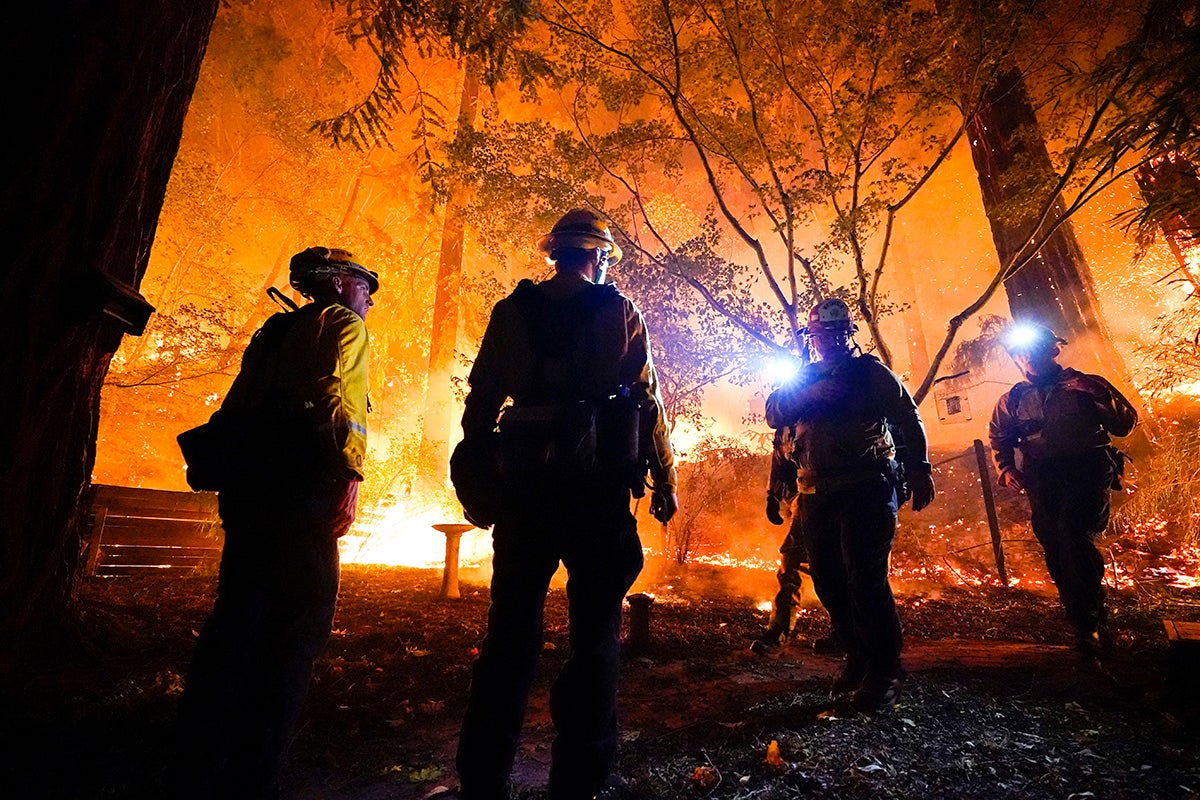This website uses cookies so that we can provide you with the best user experience possible. Cookie information is stored in your browser and performs functions such as recognising you when you return to our website and helping our team to understand which sections of the website you find most interesting and useful.

Emission levels soared during the California wildfires, according to new data compiled exclusively for The Independent.
In the second half of August, at the height of the fires, carbon monoxide (CO) levels were, on average, almost double what they were before the blazes broke out. Nitrogen dioxide levels (NO2), from 18-30 August, were around a quarter higher than normal levels (CO is the primary air pollutant emitted from wildfires).
CO spikes corresponded to the wildfires, some of the largest in California's history: The SCU Lightening Complex - a group of fires - to the south of San Francisco and the LNU Lightening Complex to the north of the Bay Area.
Those fires, and others, began with a massive electrical storm on 15 August that unleashed thousands of lightning bolts. Hundreds of fires in California have since burned through more than 2,218 square miles (5,747 sq km), caused eight deaths and destroyed nearly 2,800 structures, many of them homes.
The analysis was provided by greenhousemaps.com, using data from the European Space Agency’s Sentinel-5P satellite. Although CO levels were higher in California than other parts of the US, emissions were seen on the maps drifting east into neighbouring states.
James Poetzscher, Greenhouse Maps founder, told The Independent: "California’s increasing temperatures, attributable to climate change, are largely responsible for the state’s uptick in devastating forest fires.
“The unfortunate reality is that, as bad and frequent as these fires are in 2020, due to climate change, temperatures are inevitably going to continue rising for at least the next 20 or 30 years resulting in more frequent and more severe fires.”
CO is a colourless, odourless gas that has the potential to kill in high enough doses. The air pollutant is found in fumes that come from burning carbon-based fuels, like wood, when there's limited oxygen. It can accumulate in indoor areas and poison those who breathe it in.
Like with CO, the analysis found that NO2 emissions in the fire zones had spiked. NO2 levels in the atmosphere in part come from cars, trucks, buses and power plants. The air pollutant forms when fossil fuels burn at high temperatures. Along with other nitrogen oxides, NO2 contributes to particle pollution in the air and interact with water, oxygen and other chemicals to form acid rain.
The air pollutant can cause a range of health issues, according to the American Lung Association, including increased inflammation of airways; cough and wheezing and reduced lung function. The group also points to new research which warns NO2 to be the likely cause of asthma in children.
Along with the immediate dangers posed by raging wildfires, deterioration in air quality has serious implications during the coronavirus pandemic.
According to the European Public Health Alliance (EPHA), people who live in polluted cities are more at risk from the Covid-19. Poor air quality has been linked to hypertension, diabetes and respiratory diseases, conditions that place patients at greater risk.
On Tuesday, the two largest wildfires, east and north of San Francisco Bay, were each about 65 per cent surrounded, the California Department of Forestry and Fire Protection said. A third big fire, burning to the south in the Santa Cruz Mountains region, was 41 per cent surrounded.
The progress has allowed thousands of people to return home but many remain under evacuation orders, Cal Fire said.
Forecasts have cautioned about increasingly warm and dry conditions heading toward the Labor Day weekend.
Wires contributed to this report



 Africana55 Radio
Africana55 Radio 
